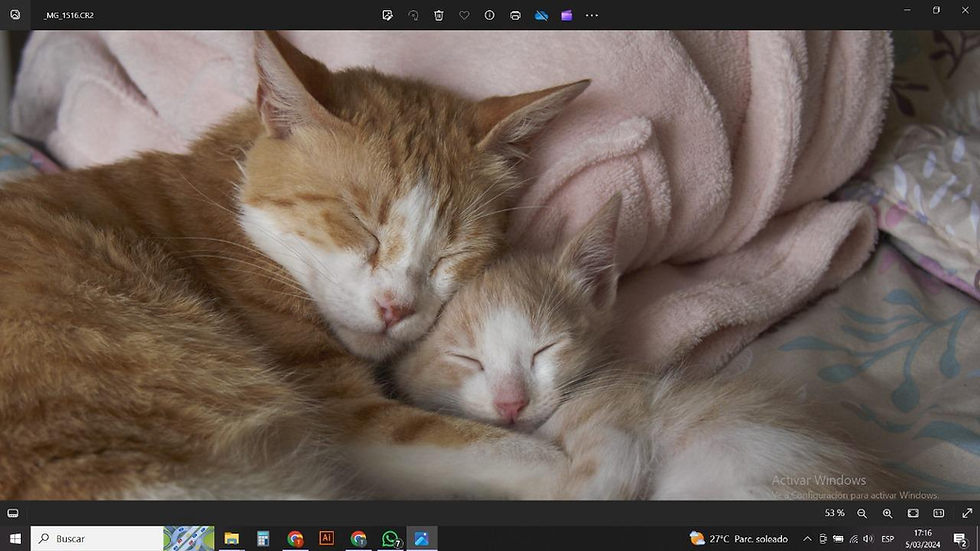Mammon the Cat
- Dr. Rudyard Story

- Feb 26, 2022
- 3 min read
Updated: Mar 4, 2022

“Lullaby, lullaby oh,
Who do I give this baby to?
I’ll give it to the cat Mammon
Who’ll eat it in one bite.” (1)
This is the translation of an Italian lullaby, known in countless versions, that was sung to many bambini over time, in the hope they would fall asleep, although it probably accomplished the opposite. Also called King of Cats, the Cat Mammon (Gatto Mammone) is a magical creature of legends, whose appearance resembles that of huge and terrifying cat. Although he might be intended to discipline naughty children (like the “bugbear”), in some stories Mammon is instead described as a benevolent spirit, a sort of protective familiar capable of resisting evil and witchcraft.
The name “Mammon” obviously refers to the idol from the Bible (mammon is Syriac for money), sometimes identified as a Mesopotamian demon. But Mammon is much more. In the province of Belluno, the monstrous feline used to frighten grazing cows. And in Puglia, “Mamone” or “Mamàun”, in addition to being used as an adjective for naughty children, connoted a good omen. But above all it simply meant ‘mandrill’ or ‘baboon’. In days of yore, the term Mammon referred to a type of monkey called Papio Maimon, a baboon, as indicated in Francesco Cherubini’s dictionary of 1841.(2)
Interestingly, the shapeshifting ghost cat playing monkey tricks on humans was not a phenomenon unique to Italy, as it is also found elsewhere in Europe, for instance in the account of the haunting at the Mill in Willington (near Newcastle, England). In 1840 and 1841 the home of the Procter family was invested by a poltergeist entity, who often appeared in the guise of a human but also in animal shape. One of the children, Edmund, then not yet two years old, was frightened by a monkey [!] in the nursery he called a “funny cat”. He was so impressed by it, that, as an adult he would state, it was the first incident in the ‘lugubrious hauntings’ he was able to recollect.
A cat was also seen Mrs. Procter’s sister in one of the bedrooms, going through a closed door. In the day time she had already seen a large white cat in the garden. “It was larger than a real cat and with a long snout. It appeared to go through the closed garden-door or through the wall into the engine-house, where Mr. Procter, being in the mill-yard, saw it go into the engine-house and disappear as if it had gone into the fire.”(3) Another witness Thomas Davison saw the cat ghost also outside the house, and was pestered by it to a higher degree:
“Looking towards the mill, which was then devided from the house by an open space, he beheld what he supposed was a whitish cat. It came walking along in close proximity to his feet. Thinking Miss Puss very cheeky he gave her a kick; but his foot felt nothing and the cat quietly continued its march, followed by my father, until it suddenly disappeared from his gaze. Still the ghost was not thought of by him. Returning to the window and looking in the same direction, he again beheld it suddenly come into existence. This time it came hopping like a rabbit, coming quite as close to his feet as before. He determined to have a good rap at it, and took deliberate aim; but, as before, his foot went through it and felt nothing. Again he followed it, and it disappeared at the same spot at its predecessor. The third time he went to the window, and in a few moments it made its third appearance, not like unto a cat or a rabbit, but fully as large as a sheep, and quite luminous.”(4)
1) “Ninna nanna, ninna oh, questo bimbo a chi lo do? Lo darò al gatto mammone che lo mangia in un boccone.”
3) Journal of the Society for Psychical Research, Vol. 5, No. XVV (Dec. 1892), 351-352.
4) Michael J. Hallowell and Ritson, Darren W. Ritson, The Haunting of Willington Mill: The Truth Behinds Englands’s Most Enigmatic Ghost Story, 2011, 140, 163.




Comments